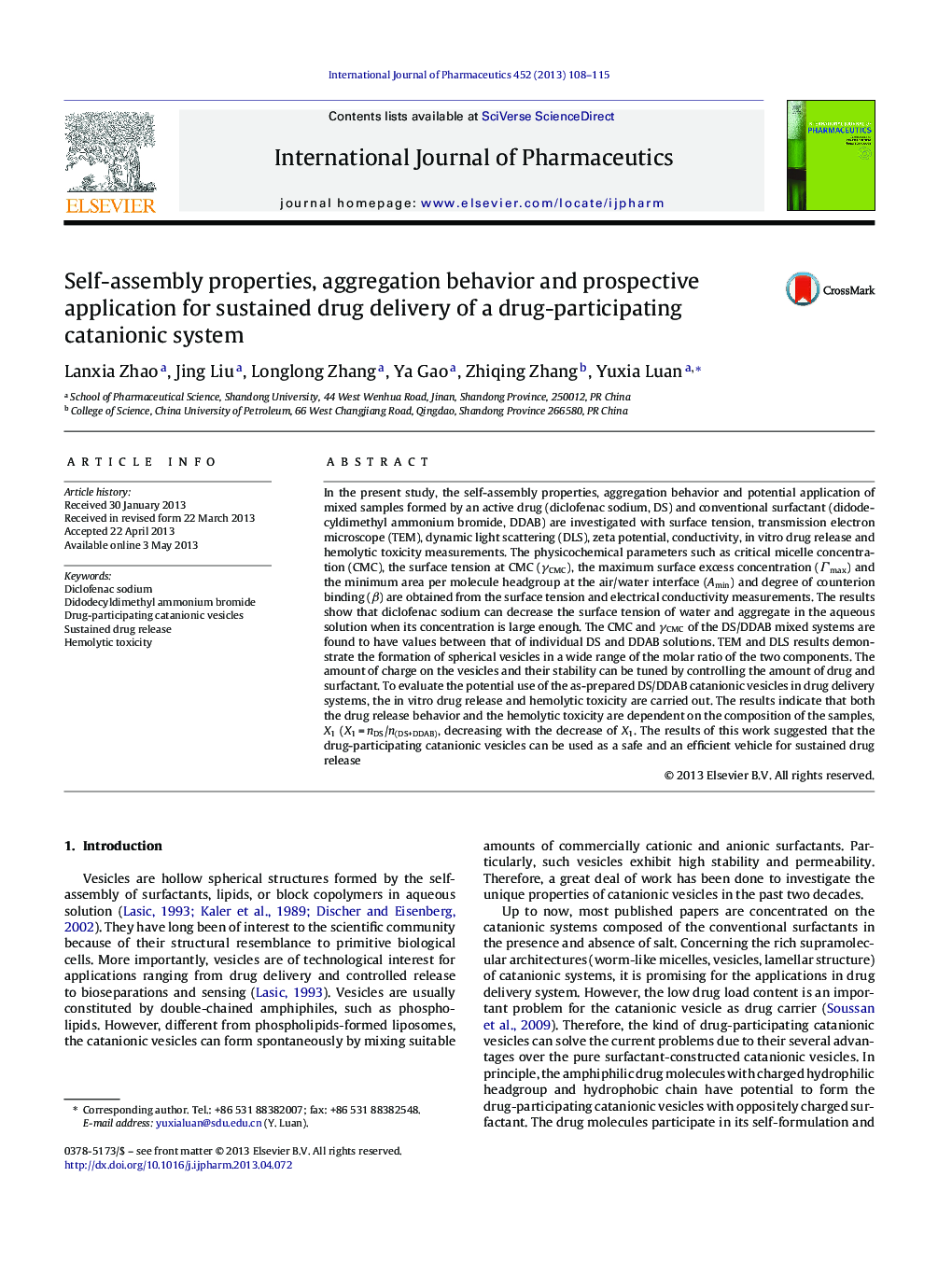| کد مقاله | کد نشریه | سال انتشار | مقاله انگلیسی | نسخه تمام متن |
|---|---|---|---|---|
| 2502274 | 1557381 | 2013 | 8 صفحه PDF | دانلود رایگان |

In the present study, the self-assembly properties, aggregation behavior and potential application of mixed samples formed by an active drug (diclofenac sodium, DS) and conventional surfactant (didodecyldimethyl ammonium bromide, DDAB) are investigated with surface tension, transmission electron microscope (TEM), dynamic light scattering (DLS), zeta potential, conductivity, in vitro drug release and hemolytic toxicity measurements. The physicochemical parameters such as critical micelle concentration (CMC), the surface tension at CMC (γCMC), the maximum surface excess concentration (Γmax) and the minimum area per molecule headgroup at the air/water interface (Amin) and degree of counterion binding (β) are obtained from the surface tension and electrical conductivity measurements. The results show that diclofenac sodium can decrease the surface tension of water and aggregate in the aqueous solution when its concentration is large enough. The CMC and γCMC of the DS/DDAB mixed systems are found to have values between that of individual DS and DDAB solutions. TEM and DLS results demonstrate the formation of spherical vesicles in a wide range of the molar ratio of the two components. The amount of charge on the vesicles and their stability can be tuned by controlling the amount of drug and surfactant. To evaluate the potential use of the as-prepared DS/DDAB catanionic vesicles in drug delivery systems, the in vitro drug release and hemolytic toxicity are carried out. The results indicate that both the drug release behavior and the hemolytic toxicity are dependent on the composition of the samples, X1 (X1 = nDS/n(DS+DDAB), decreasing with the decrease of X1. The results of this work suggested that the drug-participating catanionic vesicles can be used as a safe and an efficient vehicle for sustained drug release
A bioactive drug can participate in its self-formulation and the present work demonstrates that this kind of drug-participating catanionic vesicles can be used as a safe and an efficient drug delivery system for sustained drug release.Figure optionsDownload high-quality image (210 K)Download as PowerPoint slide
Journal: International Journal of Pharmaceutics - Volume 452, Issues 1–2, 16 August 2013, Pages 108–115